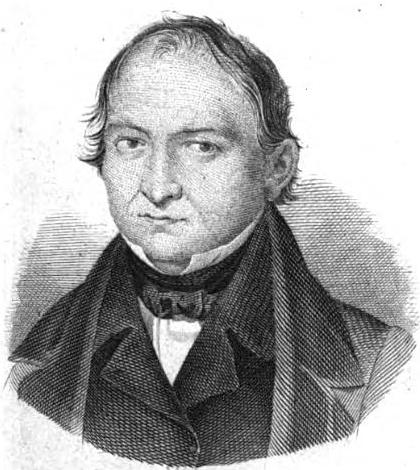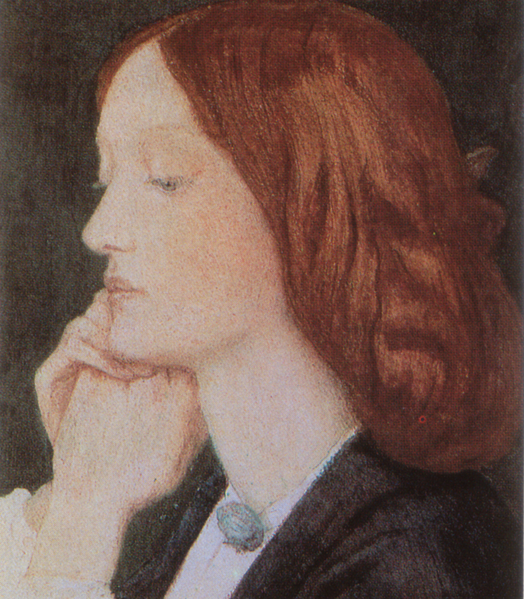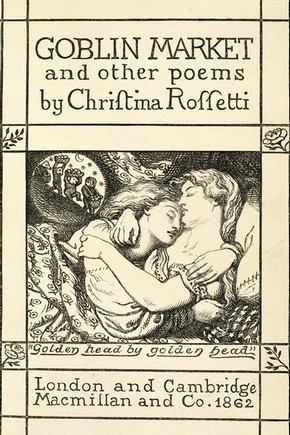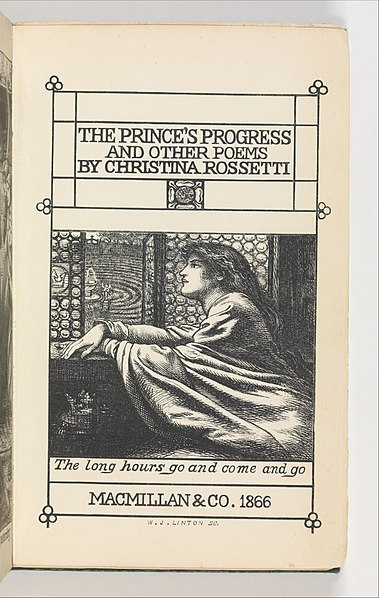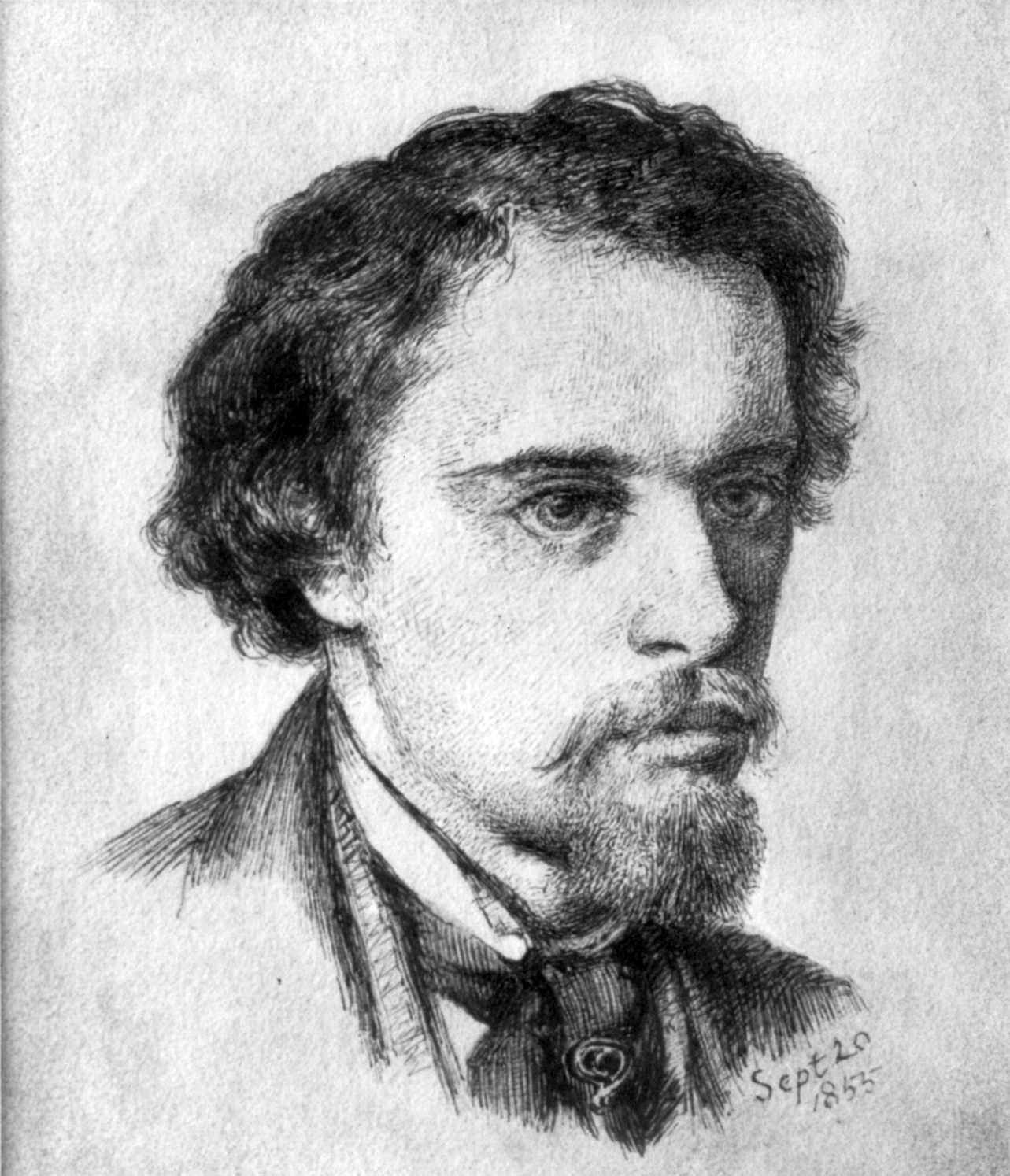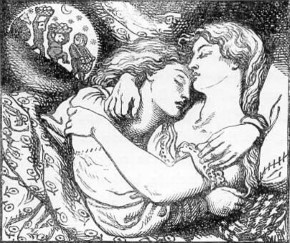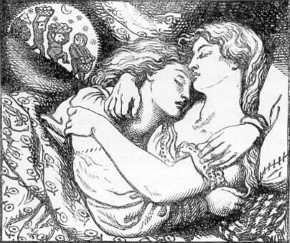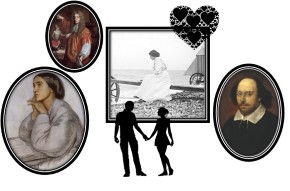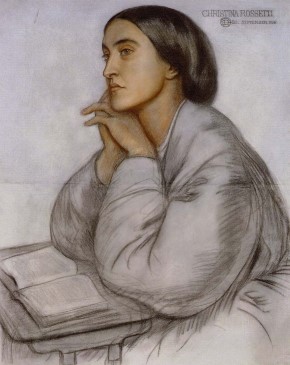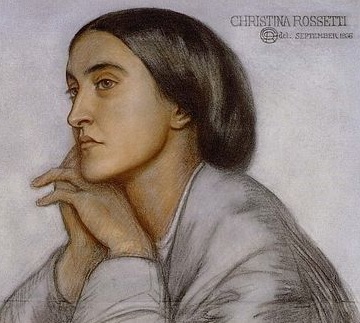
Rossetti, Christina
Early childhoodBorn in 1830 in London to an immensely talented and artistic family, Christina Rossetti was a prodigy with poetic verse. The youngest of four children, she wrote her first rhyming couplet at just five years old. Her family described her as: ‘bright and lively’, ‘curious… sharp, whimsical’ but also ‘fractious and miserable’1. Her father, Gabriele Rossetti, nicknamed the four children ‘two storms’ and ‘two calms’, Christina being one of the former.
Adolescence
Her father, an Italian exile, was obsessed with the medieval writer Dante Alighieri, whose texts constituted an almost supernatural presence in the house. Her mother, Frances (née Polidori), homeschooled both Christina and her sister, Maria, after Christina’s first breakdown.
As an adolescent, Rossetti was often left to care for her father as his health declined. She became obsessed with death, especially the deaths of saintly women, and began displaying psychosomatic symptoms of what Victorian doctors called ‘hysteria’ and ‘religious mania’. It is a gross understatement to say that Rossetti held strong religious beliefs. The idea that she was irredeemably unworthy of Christ’s sacrifice plagued her with guilt throughout her lifetime and is evident in much of her poetry. The influence of biblical imagery and allusion is at the very core of her work as a poet.
Recognising her natural aptitude for writing, Rossetti’s grandfather published her poetry by the time she was just 17 years old. At the age of 20, Rossetti wrote Maude, a quasi-autobiographical book of prose in which the central character experiences ‘religious mania’.
Adult life
Brothers Dante Gabriel and William were founding members of the Pre-Raphaelite Brotherhood, while her sister, Maria, became a governess. Rossetti declined membership to the Pre-Raphaelite Brotherhood but did model as the Virgin Mary and for other paintings for the group.
Despite research, much of Rossetti’s life is still a riddle. Her journals, letters and poetry were meticulously edited, and some she destroyed during her lifetime. She shied away from the public eye and was extremely introverted and isolated. We know of just three romantic relationships. James Collinson, the most significant, decided after a two-year engagement to enter the priesthood, but later on Rossetti found out that he had rescinded and married another woman. John Brett was a brief love interest resulting in little more than a half-finished painting and the poem ‘No, Thank You, John’. Rossetti called off her third and final relationship, with Charles Cayley, due to his agnosticism, which could never compete with her love for God.
Although an independent woman for the duration of her life, Rossetti was far from a feminist and actively campaigned against suffrage. 2 However, this is often contradicted in her writings, which explore gender ideology and subvert them. She spent 11 years as a volunteer for the St Mary Magdalene Penitentiary, an institution rehabilitating ‘fallen women’. Rossetti’s experience working with prostitutes and unwed mothers influenced a range of her work, which explores the social and cultural perspectives of sex, morality and values.
Final years
Later in life, Rossetti battled Graves’ disease, which accounts for her bulging eyes. In 1894, just four days after Christmas, a reoccurrence of breast cancer claimed her life at the age of 64. In typical Rossetti fashion, she had already prepared (and scrupulously edited) her own memorial service.
See https://windmill-music.org/viewPage/750/13 for 5 of Christina Rossetti's poems set to music.
1Thomas, Frances. Christina Rossetti, Virago Press, 2011, p. 22.
2https://repositories.lib.utexas.edu/handle/2152/1745
© ZigZag Education 2025: content may be used by students for educational use if this page is referenced.
Show / hide details
| 1830 |
Christina Georgina Rossetti born
|
|
| 1842 |
Father became ill
|
|
| 1843 |
Christ Church
|
|
| 1844 |
First breakdown
|
|
| 1847 |
First poems published
|
|
| 1848 |
Pre-Raphaelite Brotherhood formed
|
|
| 1849 |
Depression and somatisation
|
|
| 1850 |
Engagement to James Collinson
|
|
| 1854 |
Father died |
|
| 1857 |
Major religious crisis
|
|
| 1857 |
Relationship with John Brett
|
|
| 1859 |
Volunteer work
|
|
| 1862 |
Death of Lizzie Siddall |
|
| 1862 |
Goblin Market published |
|
| 1864 |
Relationship with Charles Cayley
|
|
| 1866 |
The Prince’s Progress published |
|
| 1870 |
Graves’ disease
|
|
| 1872 |
Brother’s nervous breakdown |
|
| 1874–1894 |
Rossetti’s religious writings
|
|
| 1882 |
Brother died
|
|
| 1886 |
Mother died
|
|
| 1893 |
Breast cancer
|
|
| 1894 |
Breast cancer reoccurrence and death
|
|
| 1896 |
Posthumous poems published
|


